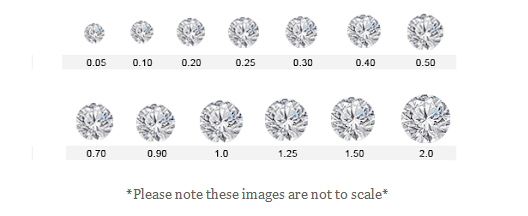DIAMONDS
Diamond is more than just aesthetically beautiful — it is an enduring symbol of love, romance and commitment.
At Jewellers Boutique we understand selecting your diamond can be a difficult process, there are so many options available and working out how to navigate the “4 C’s” can be both confusing and time consuming . Our job is to simplify the process and help guide you to find the perfect stone to fit your style and budget.
Whilst the size of the diamond is important and often the biggest factor people focus on, we place emphasis on cut, colour and clarity to strike the perfect balance when sourcing diamonds. Our preferred option, after an initial meeting to discuss your needs, is to source a selection of stones for you to view in person. From there, we sit down and view the stones and discuss the different variables. Our desire is for you to make a fully informed choice, to enable you to select the stone that is perfect for you.
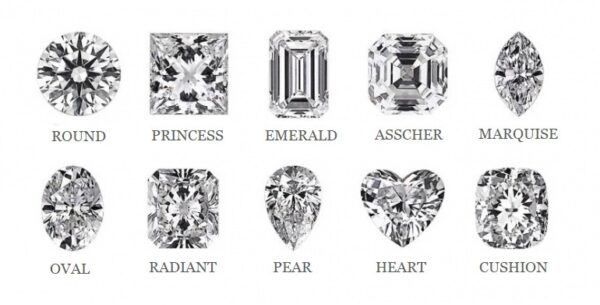
THE 4 C’S
DIAMOND CUT
Diamonds are renowned for their ability to transmit light and sparkle. What diamond cut refers, is not its shape but how well a diamond’s facets and individual proportions interact with light giving the stone brightness, fire and scintillation.
Diamond cut is graded by studying how successfully a diamond interacts with light to create desirable visual effects, such as:
- Brightness: Internal and external white light reflected from a diamond
- Fire: The scattering of white light into all the colours of the rainbow
- Scintillation: The amount of sparkle a diamond produces, and the pattern of light and dark areas caused by reflections within the diamond
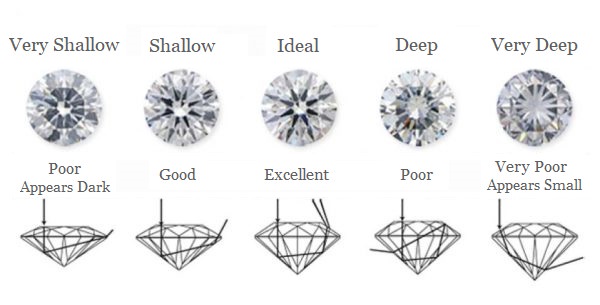
DIAMOND COLOUR
Understanding what diamond colour means helps in choosing the right diamond. The diamond colour evaluation of most diamonds is actually based on the absence of colour. A chemically pure and structurally perfect diamond has no hue and as such, a higher value.
The D-to-Z diamond colour-grading system measures the degree of colourlessness by comparing a stone under controlled lighting and precise viewing conditions to masterstones of established colour value.
Many of these diamond colour distinctions are so subtle that they are invisible to the untrained eye, however, these distinctions make a very big difference in diamond quality and price.
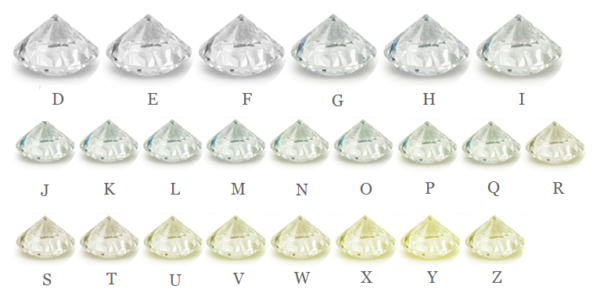
DIAMOND CLARITY
All diamonds contain imperfections. Diamonds are formed under tremendous heat and pressure, therefore, it is extremely rare to find a diamond that lacks any internal and external characteristics.
Clarity refers to how many internal flaws (inclusions) and surface imperfections a diamond has and how visible they are under magnification or with the naked eye.
The Diamond Clarity Scale has 6 categories, some of which are divided, for a total of 11 specific grades.
- Flawless (FL) No inclusions and no blemishes visible under 10x magnification
- Internally Flawless (IF) No inclusions visible under 10x magnification
- Very, Very Slightly Included (VVS1 and VVS2 ) Inclusions so slight they are difficult for a skilled grader to see under 10x magnification
- Very Slightly Included (VS1 and VS2 ) Inclusions are observed with effort under 10x magnification, but can be characterized as minor
- Slightly Included (SI1 and SI2 ) Inclusions are noticeable under 10x magnification
- Included (I1 , I2 , and I3 ) Inclusions are obvious under 10x magnification which may affect transparency and brilliance
The lower a stone’s clarity grade, the more likely you are to see imperfections such as black carbon spots or lines within the diamond.
The higher the stone’s clarity, the higher it’s value will be.
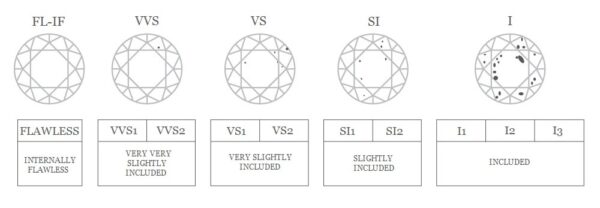
DIAMOND CARAT WEIGHT
To put it simply, diamond carat weight measures how much a diamond weighs.
A metric “carat” is defined as 200 milligrams. Each carat is subdivided into 100 ‘points.’ This allows very precise measurements to the hundredth decimal place. A jeweller may describe the weight of a diamond below one carat by its ‘points’ alone. For instance, the jeweller may refer to a diamond that weighs 0.25 carats as a ‘twenty-five pointer.’ Diamond weights greater than one carat are expressed in carats and decimals, for example 1.50 carat.
All else being equal, diamond price increases with diamond carat weight because larger diamonds are rarer and more desirable. However, two diamonds of equal carat weight can have very different values (and prices) depending on three other factors of the diamond 4Cs: Colour, Clarity, and Cut.
